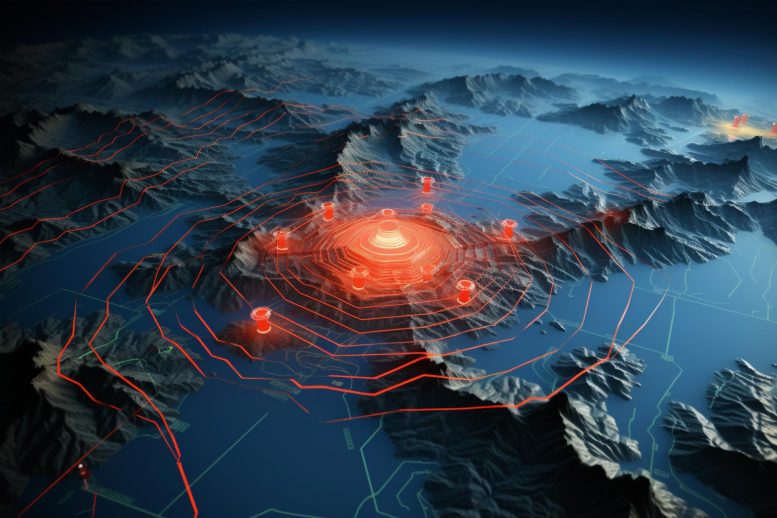A new study highlights the potential of satellites in detecting early indicators of earthquakes through anomalies in the ground, atmosphere, and ionosphere, suggesting the possibility of predicting earthquakes earlier than previously thought. Professor Mehdi Akhoondzadeh’s research, which involved analyzing satellite data from recent earthquakes near the Turkey-Syria border, identified significant precursor anomalies occurring up to 19 days before the events. These findings could pave the way for developing advanced earthquake early warning systems that minimize false alarms and increase prediction reliability. Credit: SciTechDaily.com
Research identifies clear electromagnetic anomalies from a variety of satellite data, potentially aiding the development of early warning systems for earthquakes.
According to a new study in De Gruyter’s Journal of Applied Geodesy, earthquakes may betray their impending presence much earlier than previously thought through a variety of anomalies present in the ground, atmosphere, and ionosphere that can be detected using satellites.
Developing early warning systems for earthquakes could be very helpful in preventing death and destruction. One such proposed technique involves using satellites to monitor a variety of physical and chemical parameters within the ground, atmosphere, and the layer of charged particles that exists above it, called the ionosphere.
Challenges in Detecting Earthquake Precursors
Such anomalies are known as earthquake precursors, and although researchers are aware of them, it has been difficult to definitively identify a pattern of so-called red flags that could indicate an impending earthquake. This is because of the complexity of precursor interactions and their variability in different earthquakes and geographical regions. However, with every earthquake that researchers analyze using increasingly sophisticated satellite technology, these patterns are slowly emerging.
Professor Mehdi Akhoondzadeh of the University of Tehran assessed a variety of satellite data from the run-up to and aftermath of two earthquakes that occurred on February 6, 2023 near the border between Turkey and Syria. This included data from the Chinese seismo-electromagnetic satellite, CSES-01, and the Swarm satellite mission which consists of three satellites from the DOI: 10.1515/jag-2024-0024



